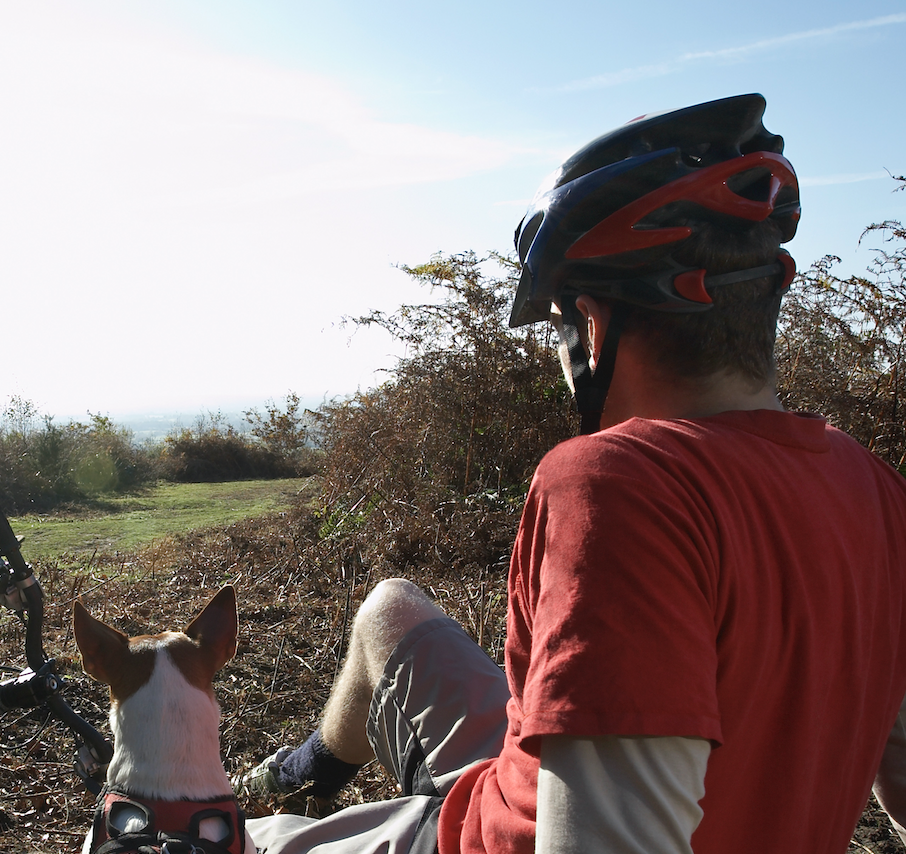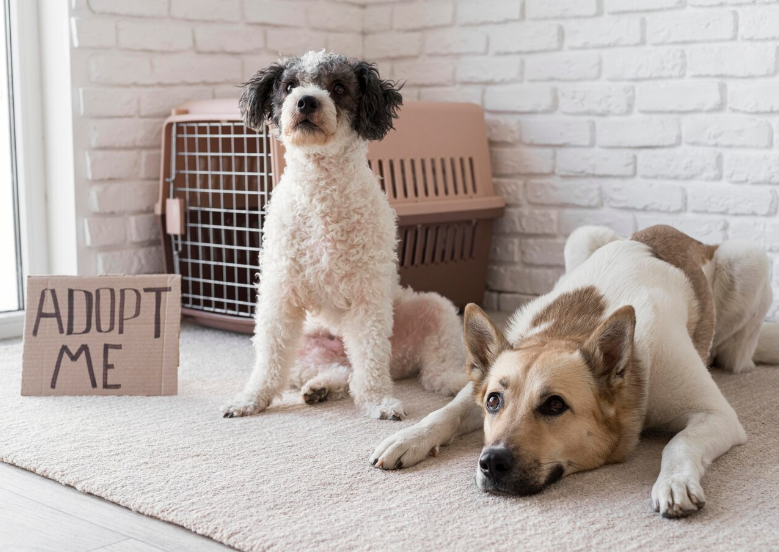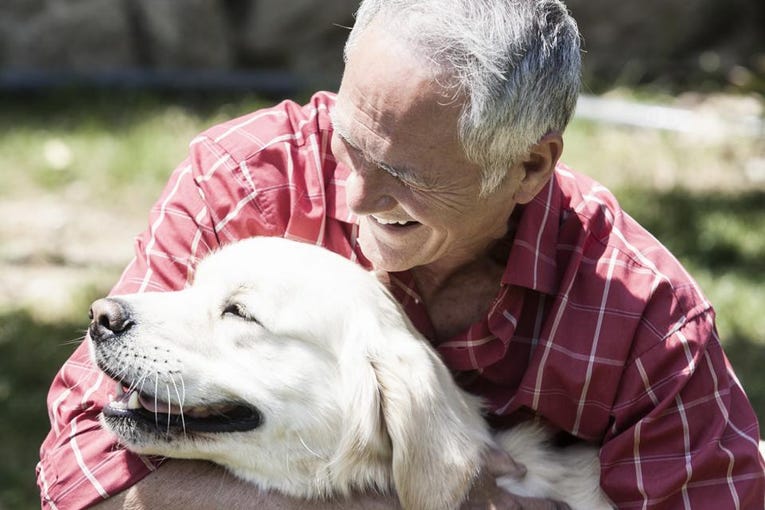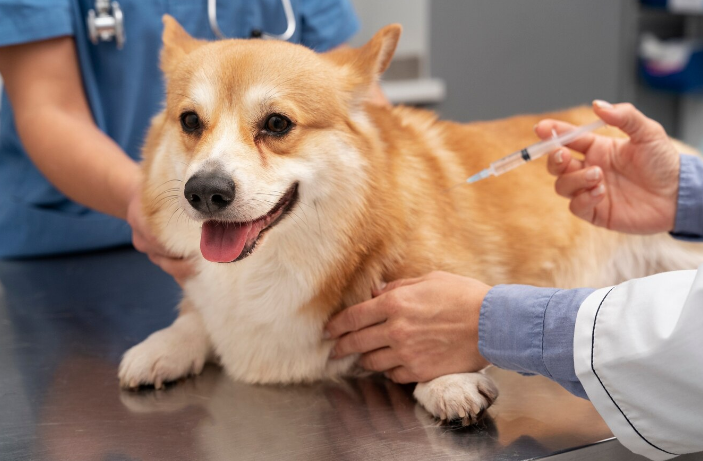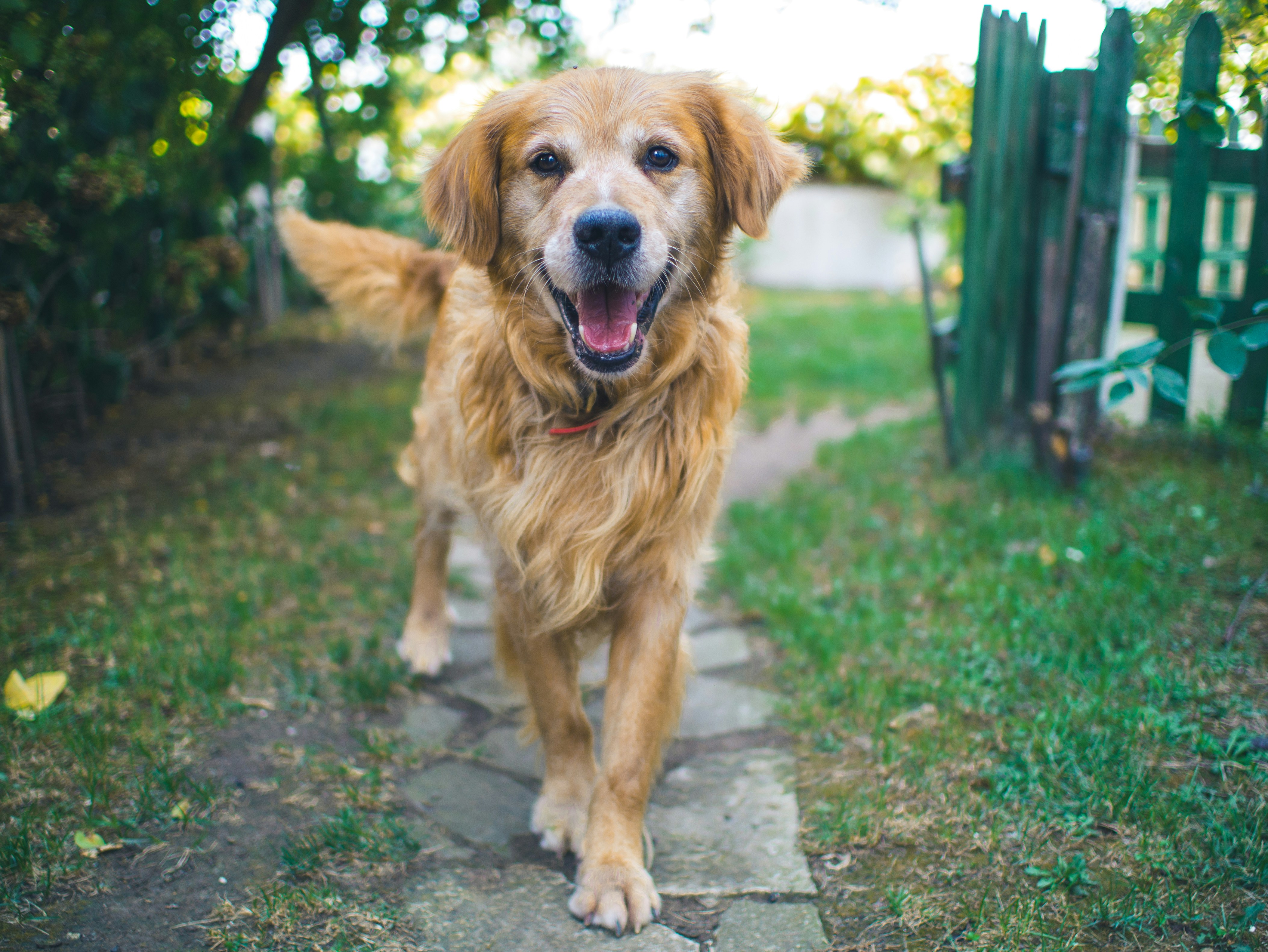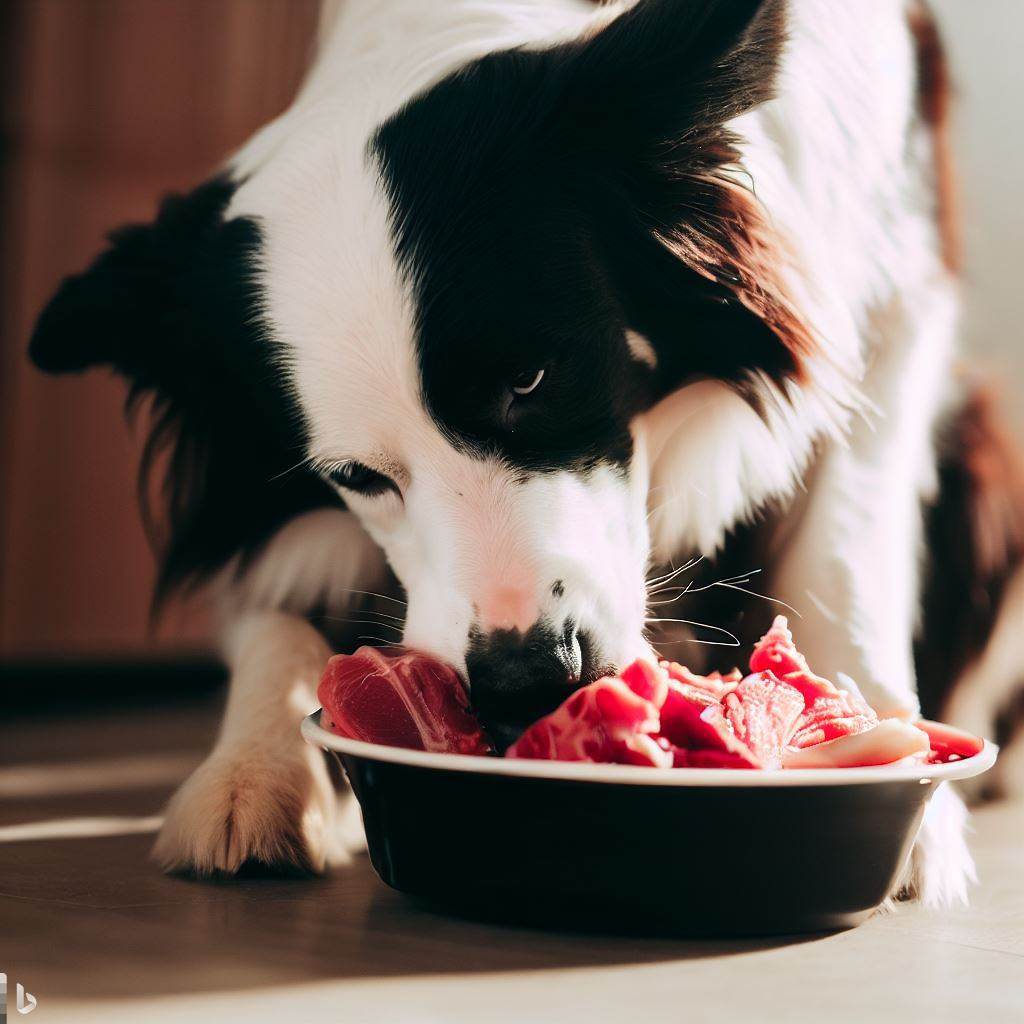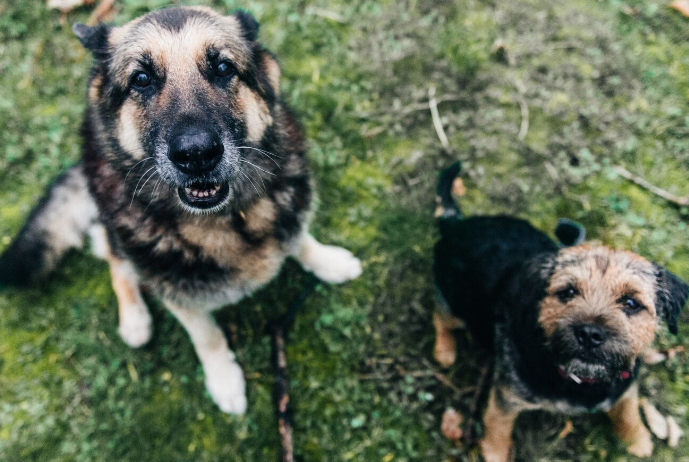
Service dogs play an essential role in the lives of many individuals, with both visible and hidden disabilities. Their assistance helps mitigate the symptoms of their owners’ health conditions, which aids in improving their confidence and skills to navigate through various situations, particularly in public.
To provide reliable assistance, service dogs undergo specialized training. It aims to ensure they obey to obedience commands, remain calm and focused on their owners in the presence of distractions in various environments and that they perform specific tasks to help them deal with the symptoms of their health condition.
But what happens when a service dog lives in a household with other dogs who are just pets and have not undergone the same level of training? Can this arrangement work, and what factors should be taken into account? Let’s find out!
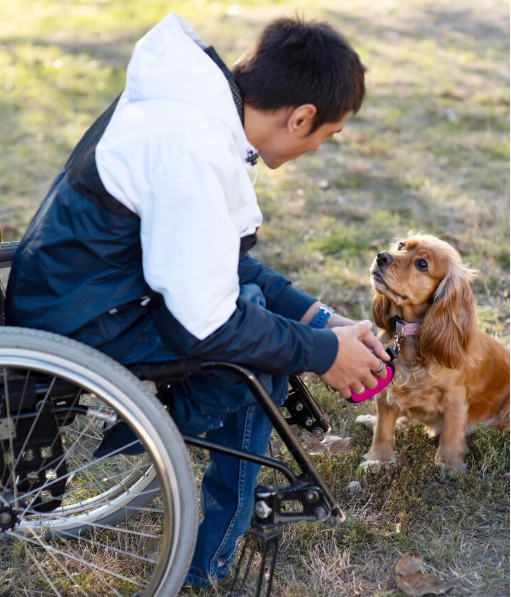
What Are Service Dogs?
Service animals are highly trained dogs who assist individuals with various disabilities, such as physical impairments, sensory challenges, or mental health issues.
It is the specialized training service dogs undergo that differentiates them from pets and support animals, such as emotional support animals and therapy dogs. The latter do not have the same level of training as they provide comfort and companionship only without performing specific tasks. This difference in the level of training reflects in the different public access rights.
You can find more information about various types of support animals in our article linked below:
Service Animals vs Emotional Support Animals vs Therapy Animals
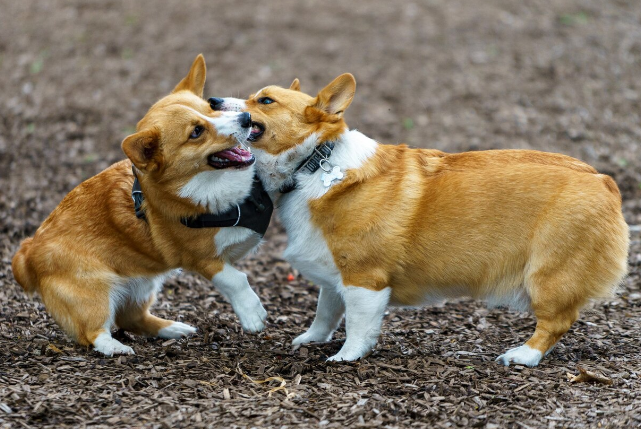
Potential Challenges of Service Dogs Living with Untrained Dogs
Distraction and Focus
As explained above, service dogs undergo extensive training not only to perform specific tasks for their handlers but also to ignore distractions in their surroundings. Therefore, focus training is an essential part of service dog training. This training is crucial for their ability to effectively assist individuals with disabilities.
However, when living with untrained dogs, service dogs may face distractions that disrupt their focus. For example, untrained dogs might exhibit behaviors such as barking, jumping, or playful chasing, which can divert the service dog’s attention from their tasks.
This can be particularly problematic in public, where there are many distractions such as other animals, people, sounds and smells, and where focusing on the handler is essential. Lack of focus can result in ineffectiveness of the service dog to perform their tasks such as guiding their handler, providing mobility support, alerting to sounds in the environments, etc. This, in turn, may be compromising the handler's safety.
Behavioral Differences
Due to their essential role as medical equipment rather than pets, the behavioral expectations for service dogs are different from those of untrained dogs.
Service dogs are trained to be calm, and focused on their handler, while untrained dogs may display a wide range of behaviors, including, hyperactivity, fearfulness, overly engagement with people. These differences can create a stressful environment for the service dog, who may become confused or irritated. For instance, if the untrained canine is prone to unwanted behaviors such as excessive barking, this can lead to increased anxiety and developing potential conflicts.
If a service dog is exposed to stressful environment for a long time, this is very likely to affect their performance, hence their ability to effectively assist their handler.
Resource Guarding and Territorial Issues
Dogs are territorial animals, which is evolutionary because it helped their ancestors protect valuable resources such as food, shelter, and mates, ensuring survival and reproduction. This behavior still remains today and many dogs are prone to resource guarding to protect their territory, food, toys and even family members.
These instincts can lead to conflicts when multiple dogs live in the same household. Resource guarding in untrained dogs can manifest through growling, barking, or even snapping. This territorial behavior can create a tense atmosphere, making it difficult for a service dog to feel secure and comfortable, and may also pose a potential threat to the service dog.
Last but not least, if the service dog feels threatened by the untrained dog, this can result in erosion of the bond between the service dog and their handler.
Socialization and Training Needs
Untrained dogs often lack the socialization necessary to interact appropriately with other dogs, particularly those that have undergone specialized training.
The lack of proper exposure to various environments and situations, especially from a young age, can result in fearful, hyper, or aggressive responses to stimuli in the surroundings, particularly toward other animals.
Lack of socialization can cause an untrained dog to react aggressively when a service dog approaches, causing stress for both dogs and their owner(s). Furthermore, service dogs are typically used to more structured daily routine and interactions in contrast to pet dogs. These typically involve not only regular activities such as walking, feeding and play time but also exercise and training. Training a service dog is an ongoing process and progress should be maintained.
With that being said, erratic behaviors that untrained dogs may exhibit, can lead to misunderstandings or conflicts. To mitigate these issues, it is crucial to emphasize socialization and training for all dogs, especially those who share the same living environment. This will help ensure they can interact properly and most important safely!
Health Concerns
Service dogs should be healthy and maintain a high level of hygiene. This is particularly important since they accompany their handlers to public places.
If the untrained dog from the same household as the service dog is not up to date with their vaccinations, flea treatments, or parasite control, this can pose potential health risks to the service dog. The service animal can become ill, which will affect their ability to properly support their owner.
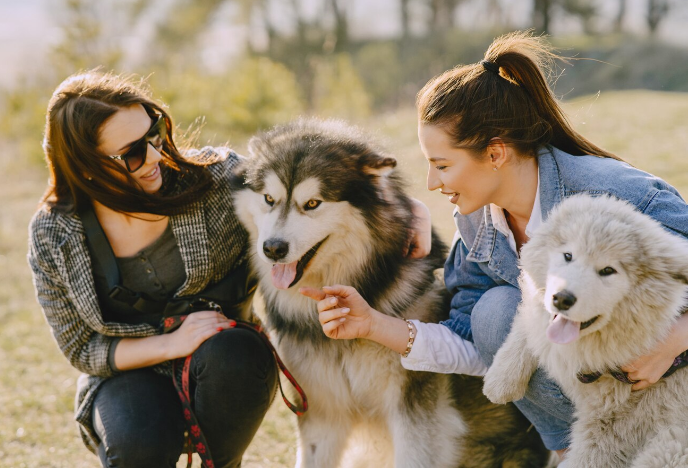
Successful Cohabitation of Service Dogs and Untrained Pet Dogs
Gradual and Supervised Interactions
To ensure a smooth transition and prevent conflicts, it’s essential to monitor interactions between the service dog and the untrained dog. This is particularly important during their initial introductions.
We recommend beginning with short, controlled meetings in a neutral environment where none of the dogs feels the need to defend their territory. If both dogs are calm and do not display unwanted behaviors, you can gradually increase the time they spend together. Make sure they are comfortable with each other and do not force interactions.
Positive Reinforcement
Positive reinforcement, such as treats, toys, praise, and petting, for rewarding calm behavior will help both dogs associate their interactions with a positive outcome. This will aid in preventing unwanted behaviors, such as aggression or anxiety, encouraging the dogs to remain calm and relaxed during their interactions. Over time, this positive reinforcement will strengthen their ability to socialize, and reduce the likelihood of tension or conflict.
Additionally, if the untrained dog remains calm when the service dog is performing a task, you may reward both dogs for their good behavior. This will not only reinforce positive interactions but will also encourage the untrained dog to adopt wanted behaviors.
Moreover, integrating training exercises into daily activities can help strengthen the bond between the dogs. As they progress over time, you can also introduce play sessions. However, make sure to supervise these until both dogs get fully accustomed to each other’s presence.
Clear Boundaries
Creating a space for the service dog where they can retreat when they need, can help maintain their mental health and overall well-being. Service dogs are still dogs, with their own needs to rest, relax, and play, so providing a designated area where the service dog can decompress uninterrupted is important.
If there is no designated area in your home, consider using gates or barriers to create one. Additionally, you might consider establishing rules regarding areas, such as the service animal’s sleeping and feeding areas, where the untrained dog is not allowed. This will help maintain order and minimize potential conflicts over resources.
Training the Pet (Untrained) Dog
Investing time and putting effort into training the pet dog is probably the most effective strategy to ensure a peaceful cohabitation between your two paw friends.
Basic obedience training is essential and typically includes commands like "sit," "stay," "leave it," and "come." Working on your pet dog’s focus skills can also be particularly beneficial for the successful co-housing with a service animal.
Teaching these commands can improve the untrained dog’s impulse control and help them learn appropriate behaviors when interacting with the service dog and other animals, in general.
The following article may provide valuable tips on how to teach a dog basic obedience commands:
Dog Training Commands Every Dog Should Know
Additionally, if you are looking for a structured training program that emphasizes obedience and good manners, the Canine Good Citizen Course may be the right fit for you.
Routine and Consistency
Dogs are creatures of habit and thrive on routine, as it provides them with a sense of security and predictability.
Establishing a consistent daily schedule for feeding, exercise, and playtime can help both dogs feel more comfortable in their environment. Additionally, it will help you organize your time throughout the day to ensure you can spend enough time with each dog to meet their needs both physical and mental.
Consistency in routine will contribute to improving your furry friends’ focus skills and reducing anxiety. It will also reinforce their roles and responsibilities within the household.
If you are a service dog handler but also have a pet dog, you should know that this arrangement might work but it requires patience, consistency, and active engagement in socializing and training the animals. Of course, the success of such an arrangement also depends on the temperament of both dogs.
By using the right strategies, you can create a harmonious environment where your service dog and untrained dog can live together happily and peacefully!



